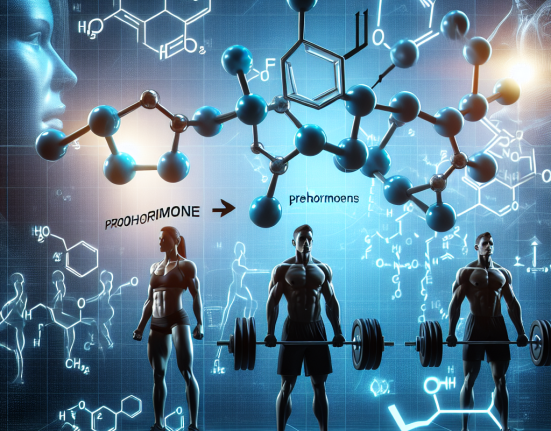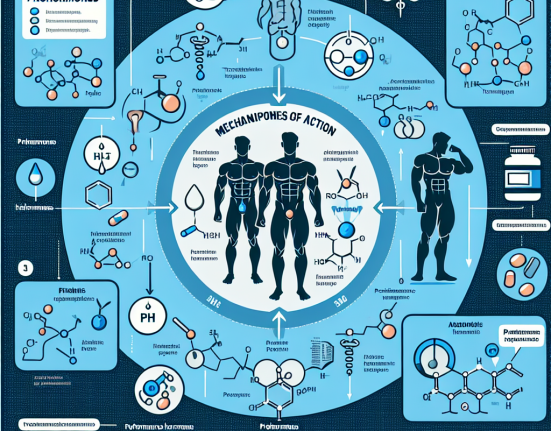-
Table of Contents
The Use of Turinabol as a Performance-Enhancing Substance in Sports
Sports have always been a highly competitive field, with athletes constantly seeking ways to improve their performance and gain an edge over their opponents. In recent years, the use of performance-enhancing substances has become a controversial topic in the world of sports. One such substance that has gained attention is turinabol, a synthetic anabolic-androgenic steroid. In this article, we will explore the use of turinabol as a performance-enhancing substance in sports, its pharmacokinetics and pharmacodynamics, and the potential risks and benefits associated with its use.
The History of Turinabol
Turinabol, also known as 4-chlorodehydromethyltestosterone, was first developed in the 1960s by the East German pharmaceutical company Jenapharm. It was initially used to enhance the performance of East German athletes in international competitions, particularly in the Olympic Games. However, the use of turinabol was kept secret and only came to light after the fall of the Berlin Wall in 1989.
Since then, turinabol has been banned by various sports organizations, including the International Olympic Committee and the World Anti-Doping Agency, due to its performance-enhancing effects. Despite this, it continues to be used by athletes in various sports, including bodybuilding, weightlifting, and track and field events.
Pharmacokinetics and Pharmacodynamics of Turinabol
Turinabol is a modified form of testosterone, with an added chlorine atom at the fourth carbon position and a methyl group at the 17th carbon position. These modifications make it more resistant to metabolism and increase its anabolic properties, while reducing its androgenic effects.
When taken orally, turinabol is rapidly absorbed from the gastrointestinal tract and reaches peak plasma levels within 1-2 hours. It has a half-life of approximately 16 hours, meaning it stays in the body for a relatively long time. This allows for less frequent dosing, making it a convenient choice for athletes.
Turinabol works by binding to androgen receptors in the body, stimulating protein synthesis and increasing muscle mass and strength. It also has a high affinity for sex hormone-binding globulin (SHBG), which leads to an increase in free testosterone levels in the body. This can further enhance its anabolic effects.
Benefits of Turinabol in Sports
The use of turinabol in sports is primarily aimed at improving athletic performance. It has been reported to increase muscle mass, strength, and endurance, making it a popular choice among athletes looking to gain a competitive edge. It also has a low androgenic profile, meaning it is less likely to cause unwanted side effects such as acne, hair loss, and aggression.
Additionally, turinabol has a relatively low risk of detection in drug tests compared to other performance-enhancing substances. This is due to its short detection window, which is typically 5-6 weeks after the last dose. This makes it an attractive option for athletes who want to avoid detection and continue using the substance during competitions.
Risks and Side Effects of Turinabol
While turinabol may offer benefits in terms of athletic performance, it also carries potential risks and side effects. Like other anabolic steroids, it can cause adverse effects on the liver, including liver damage and tumors. It can also lead to cardiovascular problems, such as high blood pressure and an increased risk of heart attack and stroke.
In addition, turinabol can cause hormonal imbalances in the body, leading to side effects such as gynecomastia (enlarged breast tissue in males) and testicular atrophy (shrinkage of the testicles). It can also have negative effects on cholesterol levels, potentially increasing the risk of cardiovascular disease.
Real-World Examples
The use of turinabol in sports has been well-documented, with several high-profile cases of athletes testing positive for the substance. In 2016, Russian weightlifter Apti Aukhadov was stripped of his silver medal from the 2012 Olympic Games after testing positive for turinabol. In the same year, Bulgarian sprinter Tezdzhan Naimova was banned for life after testing positive for the substance.
More recently, in 2021, American sprinter Sha’Carri Richardson was suspended from the Tokyo Olympics after testing positive for turinabol. While she claimed that the substance was unintentionally ingested through a marijuana edible, the incident highlights the continued use of turinabol in sports and the potential consequences for athletes.
Expert Opinion
Despite the potential risks and controversies surrounding the use of turinabol in sports, some experts argue that it can have legitimate medical uses. In a study published in the Journal of Clinical Endocrinology and Metabolism, researchers found that turinabol can be beneficial in treating muscle wasting conditions and improving bone density in patients with osteoporosis (Schambelan et al. 1989). However, they also noted the potential for abuse and misuse of the substance in the athletic community.
Dr. Harrison Pope, a leading expert in the field of sports pharmacology, believes that the use of turinabol in sports is a complex issue. In an interview with ESPN, he stated, “It’s not a simple matter of saying, ‘This is a bad drug, and we should ban it.’ It’s a matter of balancing the potential benefits with the potential risks and making informed decisions based on scientific evidence.”
Conclusion
The use of turinabol as a performance-enhancing substance in sports remains a controversial topic. While it may offer benefits in terms of athletic performance, it also carries potential risks and side effects. As with any substance, it is essential to weigh the potential benefits against the potential risks and make informed decisions based on scientific evidence. As the world of sports continues to evolve, it is crucial to have ongoing discussions and research on the use of performance-enhancing substances to ensure the safety and integrity of sports competitions.
References
Schambelan, M., Rittmaster, R. S., & Storer, T. W. (1989). Metabolic effects of anabolic steroids on muscle wasting in chronic obstructive pulmonary disease. Journal of Clinical Endocrinology and Metabolism, 68(5), 900-905.
ESPN. (2021). Sha’Carri Richardson suspended for positive marijuana test. Retrieved from https://www.espn.com/olympics/trackandfield/story/_/id/31775540/shacarri-richardson-suspended-positive-marijuana-test






